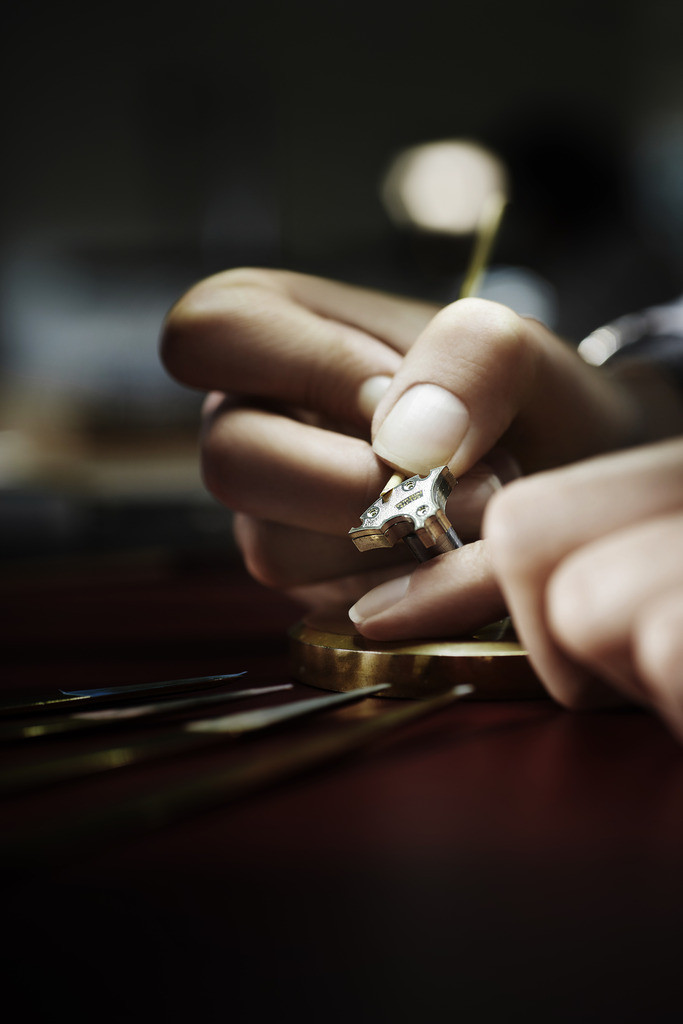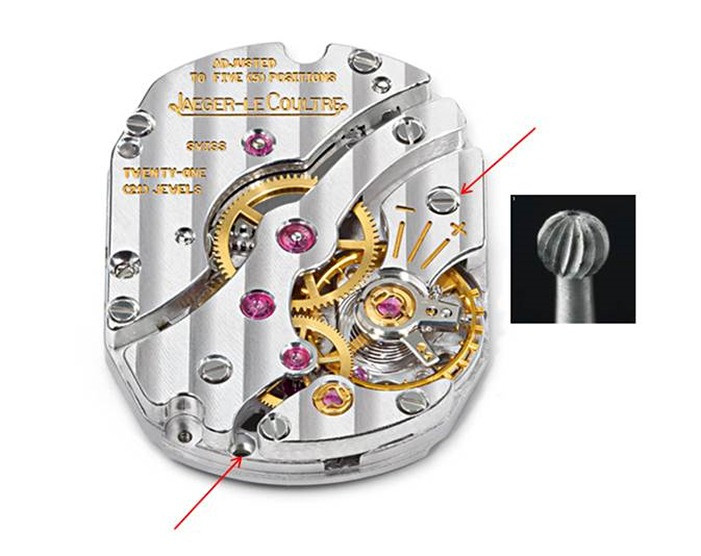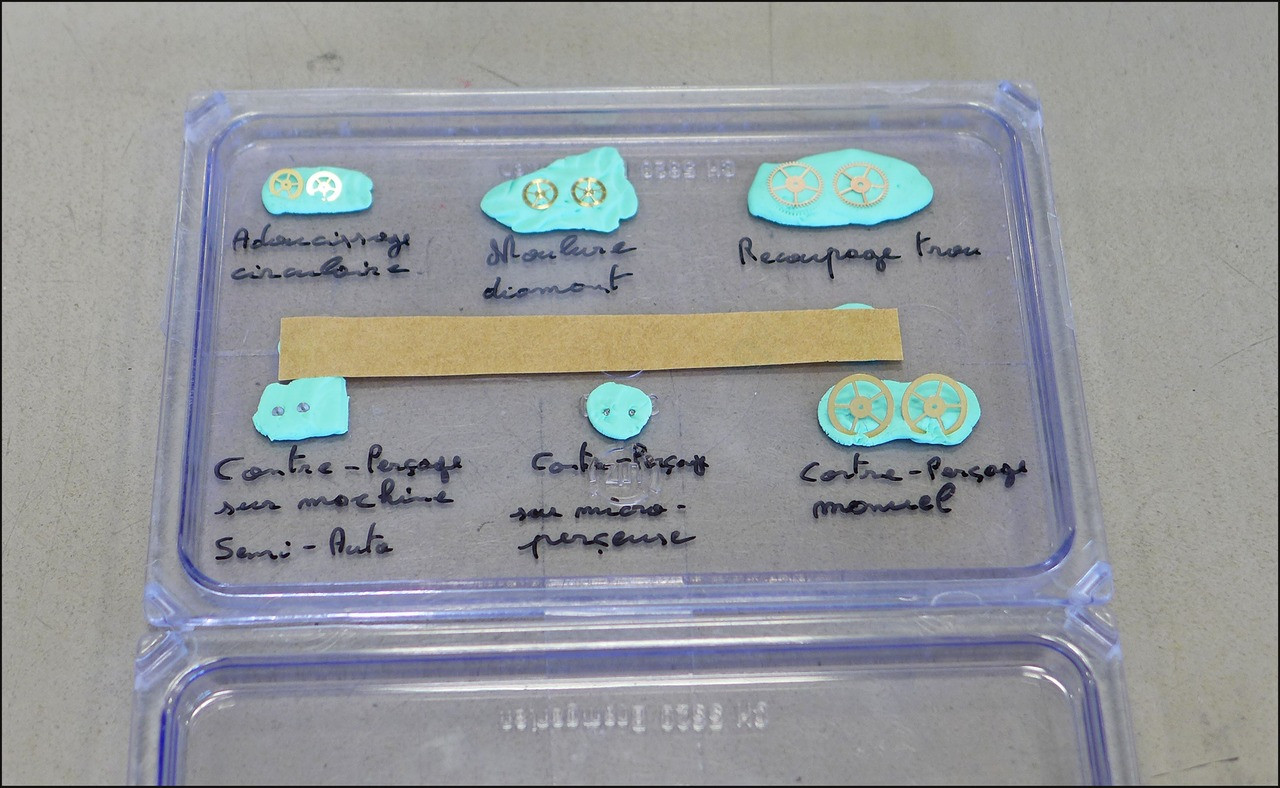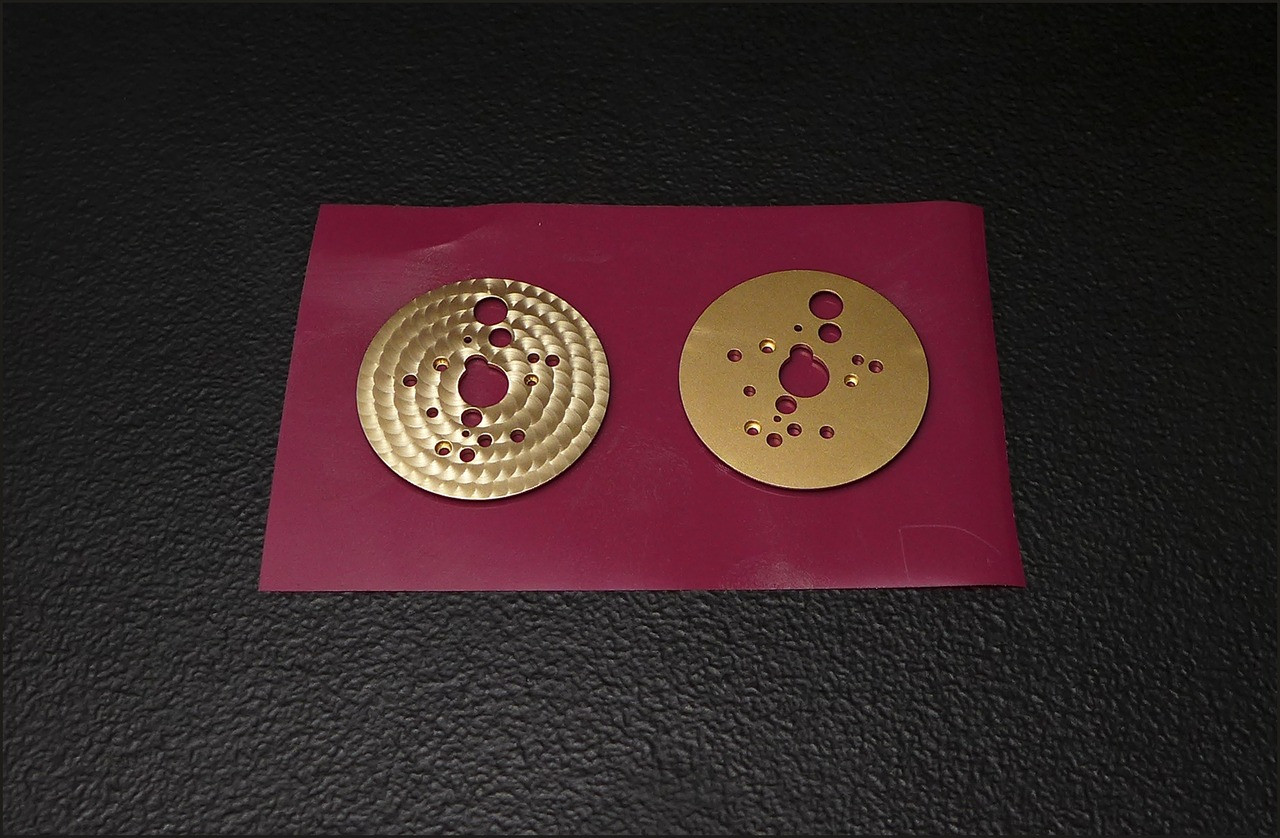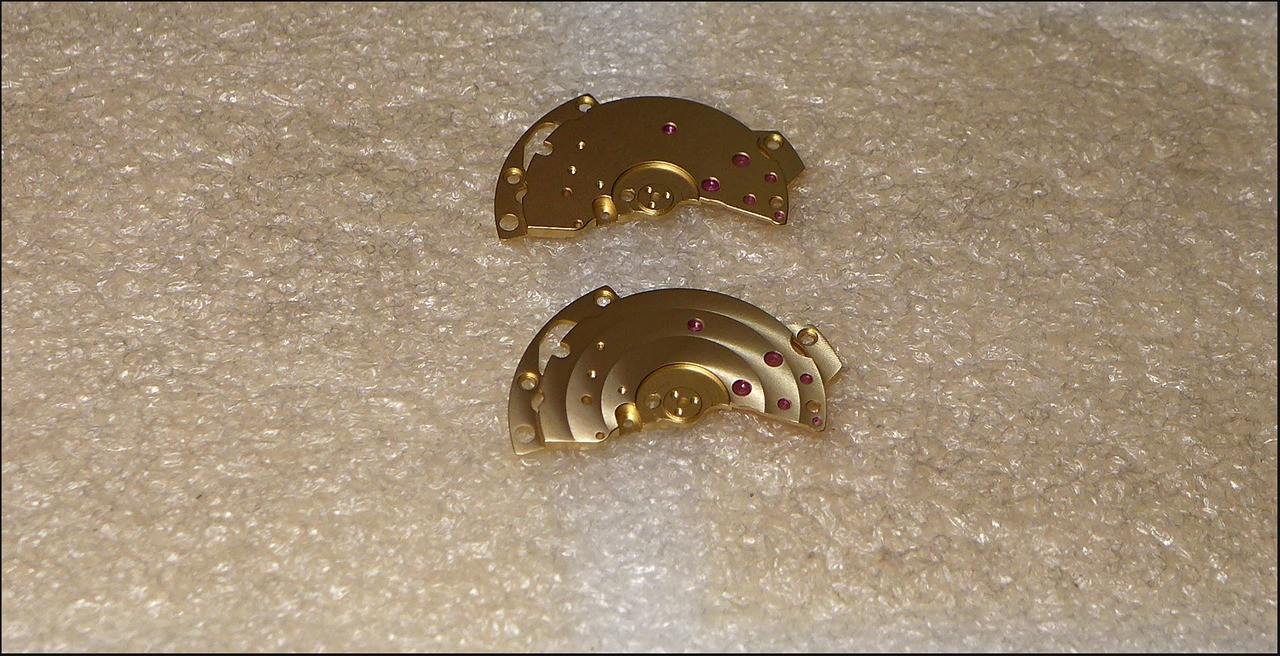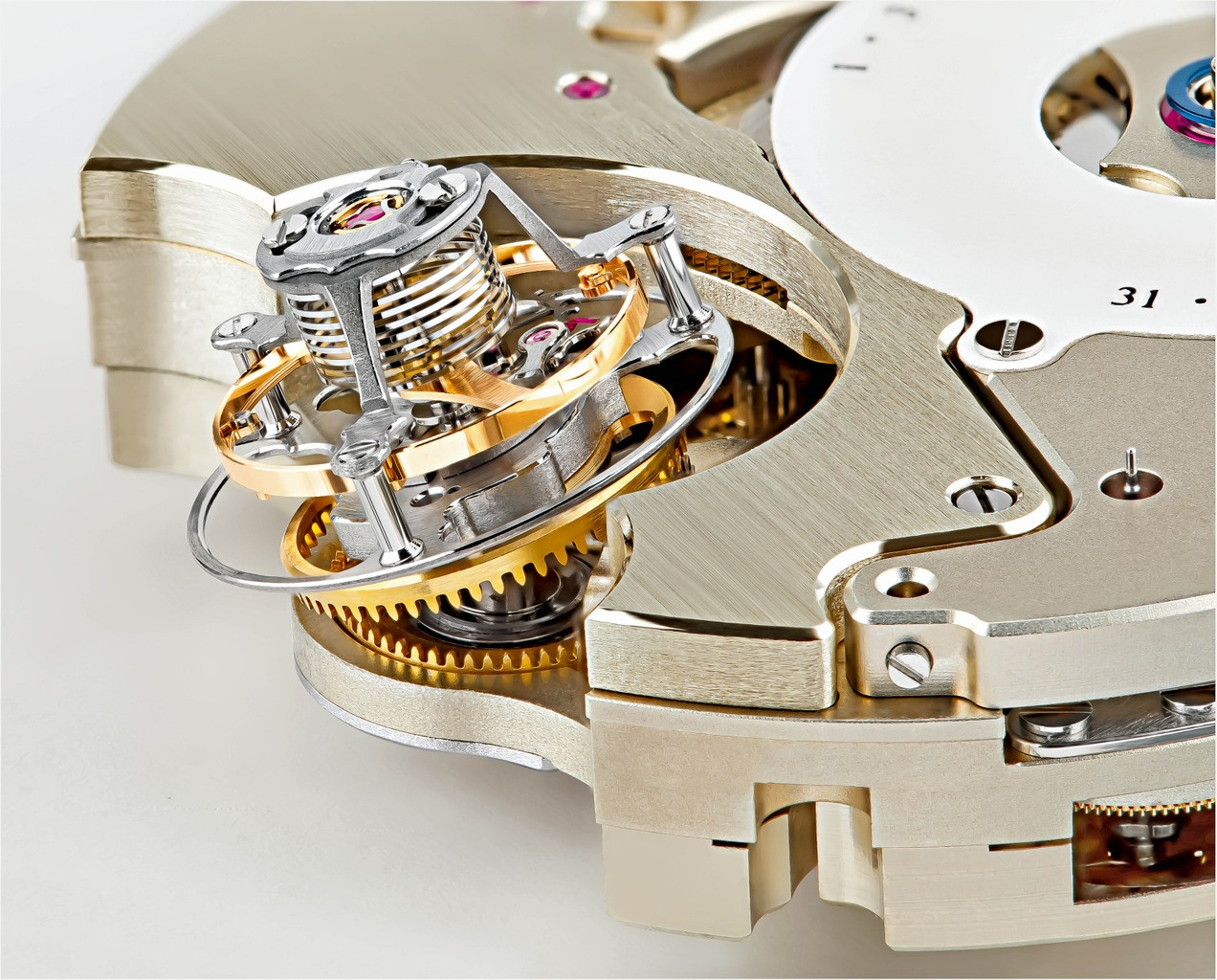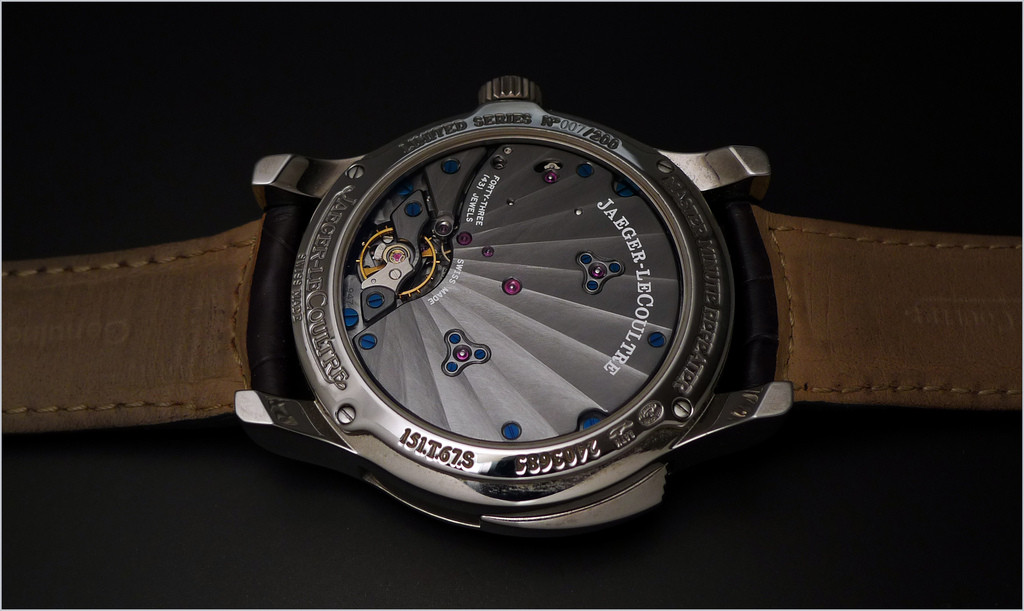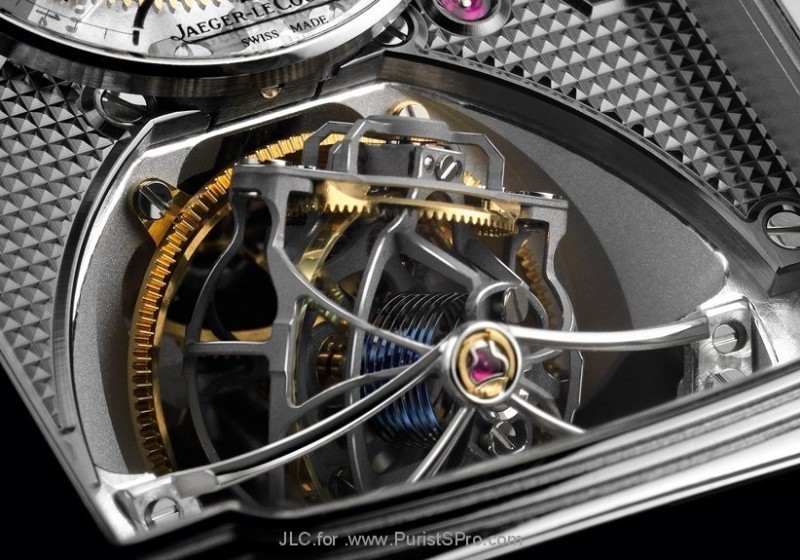
amanico
[JLC Moderator]
340629

Finishing, decoration. Some thoughts, and an attempt to make a difference between them.
It is very difficult to try to give a good definition of the words " Finishing " and " Decoration ".
Indeed, in our Watch lovers world, we always mention the finishing of a movement, to say that it is great or poor.
You will see, here, that the reality corresponds to different situations.
According to the people I met in the assembling and encasing workshop, at the Jaeger-Lecoultre Manufacture, finishing includes all the operations which will allow the parts to work together.
Jaeger Lecoultre kindly sent me a text providing some technical informations.
" These operations consist of matching up going-train parts (wheels, barrel drums or covers, cannon pinions, intermediate wheels) with their pivot holes.
This enables their diameters to be adjusted to within two microns and to make them perfectly concentric (around 0µ).
The decorations carried out here consist of diamond-cut sinks (flat or round) and counterpiercing.
- Counterpiercing is a decorative operation, done by hand or on a machine, enabling a chamfer around the pivot hole. The 90° angle is bevelled to 45°.
- The diamond-cut sink is a decorative recess made with a rotating or fixed diamond bit. The sink can have a rounded or flat surface, the latter reflecting more light than the former. "
Here, the Cal 822, with the rotative diamond " head ".
So, if a part is too " rough ", you have to polish it in order to reduce the frictions ot the minimum and to ensure the movement a longer life.
We can say that finishing is more functional. I add " more " because some décorations, as explained above, are part of a movement finishing.
Here are some traditional décorations which are part of the finishing:
Circular polish, Diamond moulding, Counterpiercings are the technics shown on the picture I took at the assembling and encasing worshop.
Decoration is more about aesthetics.
A decorated movement will not work, if not finished, and a finished movement may well not be much decorated, to try to make it simple.
Decoration through some well know words:
Perlage ( Stippling ), Anglage ( Beveling ), Cotes de Genève which can be straight, circular ( Colimaçonnage ) or Sunray ( Soleillé ), Mirror Polish ( Poli Miroir ) belong to the belle horlogerie lexicon, definitely.
It is funny to notice how many french words are used and understood in the whole world to describe a movement!
Some examples to illustrate these different technics.
Perlage. Before, on your right / after, on your left.
Colimaçonnage. Before, above / After, below:
Anglage:
Cotes de Genève, straight:

Soleillé:
These aesthetical improvements don't have much to see with functionality, but with the prestige of a brand, manufacture. They are the window display of the brand savoir faire.
Let's end in beauty with a marvel, one of the most nicely decorated movement among the modern Jaeger-Lecoultre production, the Gyrotourbillon II.
Now, you will not make the confusion between finishing and decoration anymore.
... As I won't. 

Best,
Nicolas
More posts:

Finishing, decoration. Some thoughts, and an attempt to make a difference between them.
It is very difficult to try to give a good definition of the words " Finishing " and " Decoration ". Indeed, in our Watch lovers world, we always mention the finishing of a movement, to say that it is great or poor. You will see, here, that the reality co...

Thanks for this wonderful post, my friend
very enjoyable read and sure, no more confusion.

Great job!
Thanks for a great bit of information. By the way is there any book or a source that is dedicated to finishing?

There is a book AND more useful, an app which does the job (French, English, German)
Use Google with: Berner

There used to be one written by Giulio Papi
"Finitions & décorations horlogères haut de gamme" watchprint.com Only italian ones are still left. Or maybe on the second hand market. This is a great reference for any watch enthusiast with a lot of in-hand details and demonstrative photos. I'd high...

Very interesting post. Thank you.
Nicholas, if I could ask a question please. Who would decide what style of decoration will be applied to a particular movement. Is it the designer at a very early stage or later and by the technical people who will be working on it? Regards Kev.

If I can interject an opinion, I think the designer
Usually decides on the decorations. Because I have seen written instructions given on how to decorate the various pieces. Although this could be decided very early in prototype stage, and the "bean counters" or marketing people might make the final decisi...

A good reminder...
of what to look for in a movement. Most of the time I inspect the anglage first to see how well it is done and that usually sets the standard for the rest of the movement IMO. Thanks for sharing. Best Fernando


Very good summary and explanations!
The only thing that is hard for me to believe at the moment is the 2 micron accuracy that JLC is communicating (even 0 microns). I am certainly open to believe it but 2 micron ( 2 micrometre is the diameter of a bacteria, like a staphylococcus.

Must admit I was surprised too.
You definitely have to stick within one hundred in the gear train of a watch but couple of microns, even in concentricity will still ensure a good performance for most of the horological usage. In the jewels' tolerances, you usually consider 0/+5µm as a r...

A very nice article (again) Nicolas, and very well illustrated! Thanks!
One question I would add would be to know the influence of technology on the decoration. No doubt it must have revolutionised the world of adjustments but in term of decoration, what does new technology allow to do today that was not possible in the past?...

I guess the soleillé is a new technique of decoration. Now, what changed with technology is that it is massively used for most of movements.
While high level watches can have a hand made decoration. See GP, for example, or some high end JLCs. Best, Nicolas
Well
For one thing nowadays pretty much all anglage is done with a spinning polishing wheel instead of wood stick with polishing paste. Patek and Lange doesn't hide the fact that they does this and even shows it on their website video. Very very few still does...

Totally agree !
Spinning motors has become a classic in anglage and other applications. Lot of tools can be mounted and allow a tremendous gain of time. But, this has a tendency to round up angles and étirages (on the flanks of the bridges) that are made with this tool a...

Thank you for this essay.
It is true, we do often mistake the importance of finishing (functional) with the unnecessary extravagance of decoration (not mechanically necessary) when evaluating a movement; and JLC's movements are the perfect example here. All of JLC's movements seem...

I agree and it's the same on Grand Seiko / Credor (for example)
Here are two of my watches, each about 6 years old, list price around $4000 at the time, Spring Drive movements. Grand Seiko is no-nonsense luxury expressed in pure function and conservative style. Credor is more fashion conscious with more style and flai...


Agreed on all your points, John. There is a champion, in the JLC movements, if we consider the quality / finishing / decoration / price ratio...
The Cal 849 we find in the MUT Manual Winding. Perlage, Cotes de Genève, Anglages... There is a lot, here. JLC does very well, indeed. We can have some bigger expectations, of course, on some movements, such as the Duometre ( Chrono / UTT / QL ) where we ...

A very nice finish indeed on this one...
... whether the case back is see through or not! The only differences on the movement between the two references is the blued screws on the see through version. Another decoration method is the engraving, present sometimes on some JLC references. Best, É....

Like on the movement of the Jaeger-LeCoultre Grande Reverso Ultra Thin Skeleton?
As seen here: Best, É.

JLC's cal 849 is a good example.
A beautiful piece of watchmaking and underrated, IMO, compared to some of its more perceived lofty Swiss brethren (the Big 3). For this piece, I would have used non-blued screws as I find them distracting, but that is just a personal preference. Cheers, J...

The best article on this watch...
... Never read as good, as critical, as detailed, as illustrated on this watch. It triggered me buying one! Best, É.

Many thanks Nicolas! This thread gets me thinking about other watch things...
I've been starting to think about what makes a movement a good movement aside from the obvious: how it confers accuracy and durability to the watch. I'm guessing that for the best movements, each piece serves a specific role for the movement, if not, more...

Mostly, yes; but as a point of reference, the Master Ultra Thin Moon movements use the Colimaçonnage finishing. Personally, I prefer traditional Geneva stripes.
But this one is still nice--just not my absolute preference. Photo credit to Nicolas: ...


Thx a lot for this comprehensive & very instructive read !.. It taught me several things & the pics examples are great ! hs. :))
Again one post of yours, I happily have bookmarked for later reference. - it is concise & clear, but still delineates the essence of beauty of our beloved tic-tacs.. I will much easier approach the movement's characteristics & essence of finishing & decor...



Geesh, so many new terms herein.
Thanks for taking the time to expound on a subject that I knew only a little about. Minutiae like this makes me appreciate our little hobby even more.

Very well explained.
Art work vs the technical component . The best watches have both. To win the heart and the mind!

I really like the idea for a split terminology
putting the efforts in improving the function on one side and improving the aesthetic on the other side. Both achieve two very distinct targets. Lot of functional surfaces could be left untouched straight from the machining, but polishing the contact poin...

There used to be a time..
when hidden parts were finished too... But well, for ~270K, do you really expect they would spend couple of hours (cigarette breaks included) to finish the other bridge under de dial ? ...

Nice article, Nicolas. One question....
can you do a follow-up with regards to the "AA" series of movements being released? JLC initially said they were better decorated than previous version, but I haven't seen much of a difference. -Dean

